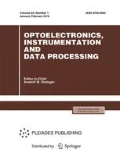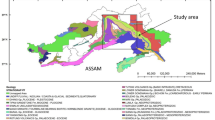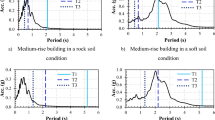Abstract
This paper presents the results of experimental studies and numerical calculations of weather-dependent ecological risks to social infrastructure facilities from the effects of powerful infrasonic vibrations generated by man-made and natural explosions. The results were obtained by applying an original ecologically safe approach developed by the authors and involving the use of seismic vibrators as sources simulating explosions but having much less power compared to the explosions. Such sources generate both seismic and acoustic (seismoacoustic) vibrations with precision metrological power and frequency-time characteristics, which, in contrast to explosions, ensures high reproducibility of research results. Results comparable to explosions are achieved due to the energy accumulation of weak vibroseismoacoustic signals. The propagation of infralow-frequency wave fields is studied depending on weather conditions and taking into account the effect of heterogeneity of the atmosphere. The results of the experiments are compared with those of numerical calculations.
Similar content being viewed by others
References
V. V. Adushkin, A. A. Spivak, and S. P. Solovev, “Geoenvironmental Consequences of Bulk Chemical Explosions in Quarries,” Geoekologiya. Inzhenernaya Geologiya. Gidrogeologiya. Geokriologiya, No. 6, 554–563 (2000).
M. S. Khairetdinov and S. A. Avrorov, “Detection and Identification of Explosive Sources,” Vestn. NYTs RK, No. 2, 17–24 (2012).
V. M. Krasnov, Ya. V. Drobzheva, and A. N. Maslov, “Acoustic Field on the Qround from an Explosion of a Launcher,” Vestn. NYaTs RK, No. 2, 79–85 (2006).
Newest and Modern Volcanism in Russia, Ed. by N. P. Laverov (Nauka, Moscow, 2005) [in Russian].
A. S. Alekseev, B. M. Glinskii, V. V. Kovalevskii, et al., Active Seismology with Powerful Vibrating Sources (Izd. SB RAS, Novosibirsk, 2004) [in Russian].
A. S. Alekseev, B. M. Glinskii, S. I. Dryakhlov, et al., “Effect of Acoustoseismic Induction in Vibroseismic Sounding,” DAN 346(5), 664–667 (1996).
B. M. Glinskii, V. V. Kovalevskii, and M. S. Khairetdinov, “Relationship between the Wave Fields of Powerful Vibrators and Atmospheric and Geodynamic Processes,” Geologia i Geofizika 40(3), 431–441 (1999).
V. V. Kovalevskii, “Acoustoseismic Wave Fields Generated by Surface Seismic Vibrators,” Akust. Zh. 51(5), 92–102 (2005).
Yu. M. Zaslavskii, Generation of Seismic Waves by Vibrating Sources (Institute Applied Physics, Nizhny Novgorod, 2007) [in Russian].
A. M. Isakovich, General Acoustics (Nauka, Moscow, 1973) [in Russian].
A. V. Razin, “On the Propagation of Sound in an Inhomogeneous Moving Atmosphere,” Izv. Akad. Nauk SSSR, Ser. Fiz. Atmos. Okeana 18(6), 674–676 (1982).
Author information
Authors and Affiliations
Corresponding author
Additional information
Original Russian Text © V.V. Gubarev, V.V. Kovalevskii, M.S. Khairetdinov, S.A. Avrorov, G.M. Voskoboinikova, G.F. Sedukhina, A.A. Yakimenko, 2014, published in Avtometriya, 2014, Vol. 50, No. 4, pp. 3–13.
About this article
Cite this article
Gubarev, V.V., Kovalevskii, V.V., Khairetdinov, M.S. et al. Prediction of environmental risks from explosions based on a set of coupled geophysical fields. Optoelectron.Instrument.Proc. 50, 323–331 (2014). https://doi.org/10.3103/S8756699014040013
Received:
Published:
Issue Date:
DOI: https://doi.org/10.3103/S8756699014040013




